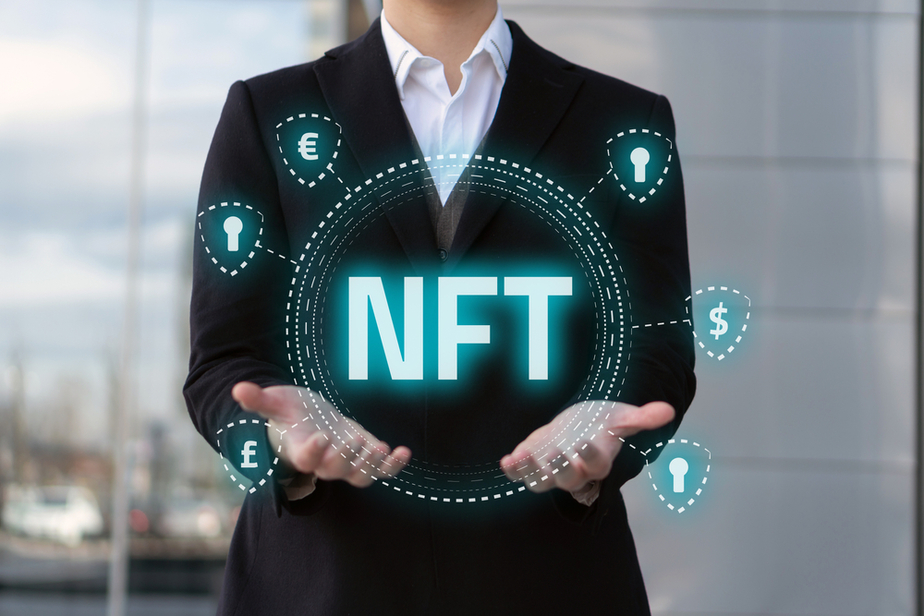NFT & Insurance: Non-Fungible Tokens
By Michael Giusti
The advent of nonfungible tokens, or NFTs, has made buying and selling digital art a reality. But, just like with physical artforms, there is a whole host of dangers out in the world for digital art. To protect those digital assets, the insurance industry is beginning to develop some new forms of coverage, specifically designed around the risks inherent in NFTs.
Whether it is to protect the underlying piece of art, the NFT itself, or just prevent run-of-the-mill hackers from stealing your digital art, NFT insurance is beginning to bring some of the peace of mind from the physical art world into the digital realm.
“Just like any other cryptocurrencies or tokens can be insured under certain circumstances, for certain losses, it’s possible to insure NFTs across different risk vectors,” said Sharon Henley, vice president of research and development for Coincover.
Coincover is an insurance company based in the United Kingdom that specializes in cryptocurrency insurance policies. They offer one of the only commercially available policies for NFTs at the moment.
NFT 101

Before going into detail about how to insure NFTs, it might make some sense to first run down what exactly an NFT is.
NFTs, or nonfungible tokens, have emerged as a way for digital artists to sell “original” versions of their works – known as “assets.”
Fungible is an economics term referring to the ability to trade something. A $20 bill is fungible because it can be exchanged for another $20.
NFTs, by their nature, are unique, and cannot be exchanged for an exact replica. An original Picaso is not the same thing as an exact replica, for example.
NFTs can, however, be bought and sold – just like an original oil painting can be bought or sold.
In other words, NFTs prices will fluctuate based on how much people believe they are, or should be worth.
“NFTs can be more complicated to insure rather than crypto currencies for a number of reasons. NFTs by their nature are unique so it’s always difficult to know exactly how much the NFT is worth and subsequently how much cover to take out and underwrite,” Henley said.
Henley also pointed out the issues of appreciation and depreciation of the NFT. “Who decides this? And what is the value of the claim at any given time?” Henley said.
Pricing isn’t the same challenge with other digital assets, like cryptocurrencies, which tend to all have public price feeds, which can be used for accurate real-time and historical pricing. Insuring cryptocurrency is also still a relatively new field, but for its part, a few more policies exist than do for NFTs.
What is an NFT?
One key to understanding NFTs, however, is to understand that the NFT is different than the art it represents.
NFTs consist of a digital “token,” which is a piece of computer code along with the artwork’s description and metadata, as well as a web address directing you to the actual artwork on the internet. The NFT itself is not the artwork – more like a “deed” or a certificate of authenticity – essentially it is proof of ownership of the asset.
Ownership of NFTs is tracked by a blockchain – the same technology that underpins cryptocurrency and a way to verify the authenticity of a transaction. In the case of an NFT, the blockchain verifies that a sale is valid, and it tracks the transfer of the token.
Once an NFT transaction is completed, it is registered as an entry into a public blockchain ledger, and then can be independently verified by anyone. That NFT is then stored in a digital wallet by the owner, much like a cryptocurrency coin is stored.
The owner retains a private “key,” which allows them to transfer the NFT to someone else down the road.
NFTs aren’t only for digital art, either.
NFTs could be assigned to just about any asset – be it a digital drawing, or an element in a video game, or a song, or a scene from a movie, presuming the person selling the NFT has proper copyright ownership of the asset that would allow them to transfer it to someone else.
In theory, NFTs could also be assigned to physical unique physical objects as well.
Scammers & NFT
A major danger in the world of NFTs is the complex world of copyright.
Just because someone sells an NFT doesn’t mean they necessarily owned the underlying asset they say they are selling to begin with. It would be like someone standing in front of their neighbor’s house with a counterfeit deed. Just because someone paid money for that deed doesn’t mean they now own the house.
Tales of rampant counterfeiting and art theft have been widely reported around many of the most prominent NFT marketplaces.
So, in addition to protecting the NFT once someone owns it, they would also do well to ensure they are buying an authentic piece of art before handing over the money.
“Check out the details of the NFTs, review the metadata, look at the URLs of the metadata as well as the URLs for the JPEGs,” Henley said. “It’s easy to switch out URLS and think you are purchasing an NFT that you are not.”
If someone is scammed, the complexities of copyright law make the question of how to recover their losses murky.
For one, if someone sells a bogus NFT, that may be a case of fraud between the buyer and the scammer, but it isn’t necessarily a copyright violation of the artist, since it wasn’t the art that was being sold, but instead a “receipt” for that art.
“Ensure that you purchase NFTs on a trusted site and when you exchange/sell them, again do your due diligence and look to see you are not being scammed or such,” Henley said.
Copyright law is complex, and selling a “deed” is not the same as copying the art.
The counterfeit NFT would be worthless, but it would be hard for the artist to take action in a case like this unless someone actually makes a copy of the work that they bought, and in that case, the suit would be against the scam victim who made the copy, rather than the scammer who sold the bogus NFT.
How Does Insurance Work with NFT?
The fact that the NFT is not the artwork itself — instead a digital address for the art — presents some unique challenges from an insurance point of view. Each element introduces some risk, and it all needs to be either managed or insured.
Since the artwork could be housed on an offsite server controlled by someone else, the first danger is that the digital asset itself could be destroyed. If there was only one copy of a photograph, and that photograph is deleted, or its file gets corrupted, or it is locked into a ransomware attack, then that would be the same as an oil painting being destroyed in a fire. The insurance policy would need to protect against that digital “damage or loss.”
There are insurance implications for the NFT itself as well. If the private key is lost, that would mean that the owner no longer has control over the asset. The same goes for if a hacker gains access to the owner’s digital wallet and makes off with the token.
“Are you protecting the Token – the ERC- 721 or ERC-1155 or are you protecting the metadata describing the NFT or are you protecting the JPEG? Are you guaranteeing that the token, metadata and JPEG are always accessible? Are you guaranteeing that the metadata and JPEG have not been compromised? There are a lot more risk vectors that need to be factored in and protection policies need to be clear as to what types of policies exist,” Henley said.
In the case of art or music NFTs where royalties for usage and transfer could potentially be assigned, owners also need to protect against so-called “smart contract failure,” which could mean financial loss if royalties couldn’t be captured or paid down the road.
Being able to transfer the token to an heir after death is another insurance consideration.
With the assets being digital, that introduces an even further quirk into the question of insurance. Most traditional property insurance policies require physical damage to an asset before a claim can be filed. But, in cases of digital artwork, proving physical damage would be difficult, if not impossible.
So, with all these questions, only a few first mover insurance companies, such as Coincover and Lloyds are dipping their toes into the market for now.
Where to from here?
Considering the relative newness of NFTs, it isn’t surprising that there aren’t many insurance policies available for them yet.
But, if someone is interested in purchasing an NFT, along with an insurance policy, the best place to start would depend on the value of the NFT.
If the NFT represents a piece of fine art — in the multimillion-dollar ballpark — the best place to start to find a policy would be from the auction house itself, which will be likely to connect you with a specialized insurance line.
Otherwise, check with the marketplace to see if they have any insurance options, and then look at the emerging insurers, such as Coincover.
Regardless of insurance, anyone working with any crypto asset, including NFTs, would do well to follow some digital best practices. For example, in the case of an NFT, download the underlying digital asset and store it redundantly.
Also, adopt good practices to protect private keys and wallet access.
“Again, just like with regular crypto – store your NFTs in your own wallet with solid backups of keys/mnemonics in place, or bestow to a trusted custodian,” Coincover’s Henley said.
NFTs hold the potential to bring a revenue source to digital artists, a method of exchanging digital art for collectors and enthusiasts, and unfortunately, an opportunity for scammers and thieves.
But as the market matures, insurance will be sure to mature along with it to help bring everyone some piece of mind.
